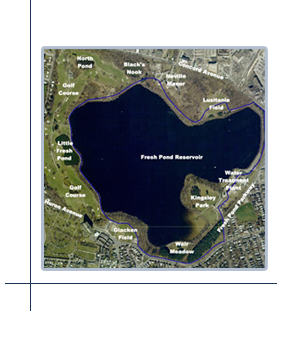|
ANADROMOUS AWAKENING: CONNECTICUT RIVER / TURNER’S FALLS
The river is an artery of passage from the mountains to the sea. In pre-industrial New England the rivers flowed without obstruction. Each spring anadromous fish returned from the oceans to spawn in their natal freshwater rivers and streams. Their smolts would retain the memory of their birth water even as they migrated from freshwater past the hardwood and conifer forests of the uplands through riffles and falls downstream in a transformative journey from fresh water to the brackish water of the salt marsh and estuaries to the salt water of the sea.
By 1700 the pre-settlement landscape of the riverine corridor saw the cutting of the masthead trees along the riverbanks and the beginnings of settlement- inland. The rivers of anadromous passage became the highways of the frontier pioneers and settlers. Pioneer frontier subsistence farming was being practiced by 1740. The first dam on the Connecticut River was constructed in 1798 at Turner’s Falls, Massachusetts. It was 16 feet high and impassable to migrating fish. Others soon followed on the Connecticut, Merrimac, Kennebec, Penobscot, and other rivers of New England. The Connecticut River was tapped for waterpower and used for transit of goods. Cities as Springfield expanded along her shores. New factories made paper and textiles and demanded a ready labor force. Populations boomed. By 1830 American shad, Atlantic salmon, alewives, blueback herring, short nose sturgeon, striped bass, and rainbow smelt were all declining in southern New England. The causes were primarily the impassable dams located at numerous locations along the Connecticut, Merrimac and other major rivers of New England and the heavy pollution near towns and mills. The rivers were corseted as the landscape was mined and exploited. The migratory fish stopped coming. Soon they would be gone from the Connecticut River.
1830 saw the height of intensive farming and cultivation within the riverine corridor peak. The natural cycles of the seasons were replaced by cultivation and harvest. However, within twenty years intensive farming in New England had been abandoned for the lure of new industries in riverfront cities. Many relied on the recently dammed rivers for waterpower. Pine forests began to grow up in former farm fields only to be cut for saw logs and use in new steam mills. By 1915 hardwoods began to sprout amidst the stumps of the white pine. The agricultural landscape was being reclaimed as forest. Land use patterns reflected urban migration from the farms to the mill towns, which sprouted up along the Connecticut River. Today, there is a cyclical and technological shift that occurs with the decades, repeating the natural cycles of growth, decline, rebirth and renewal. This is reflected in the outward migration of mill industries and their replacement with housing, nonprofit organizations and adaptive reuse in the now vacant mills. The shift from subsistence agriculture to resource based industry to knowledge and technological based industry has had a profound effect on the natural landscape. Forests reclaim abandoned farms and suburban developments. Fish return from the sea to spawn.
Anadromous Awakening documents the sea changes in the natural and cultural landscape over time. Anadromous Awakening: Connecticut River/Turner’s Falls use the Connecticut River as a living laboratory for the river communities. Art, science and technology provide windows on the watery world of the river and document the Anadromous Awakening in the spring. Anadromous Awakening recalls the pre-industrial Connecticut River by projecting schooling fish upon the vacant Strathmore Mill at Turner’s Falls. Overlays of photomural fish as the American shad and Atlantic salmon set along the façade and fence line cast reflections on to the river below. The site changes by day and night. Anadromous Awakening depicts the conflict of the natural and cultural landscape of the 19th century, postindustrial change and the river’s renewal and the celebratory return of the anadromous fish in the 21st century.
JOSEPH E. INGOLDSBY- LANDSCAPE MOSAICS |









